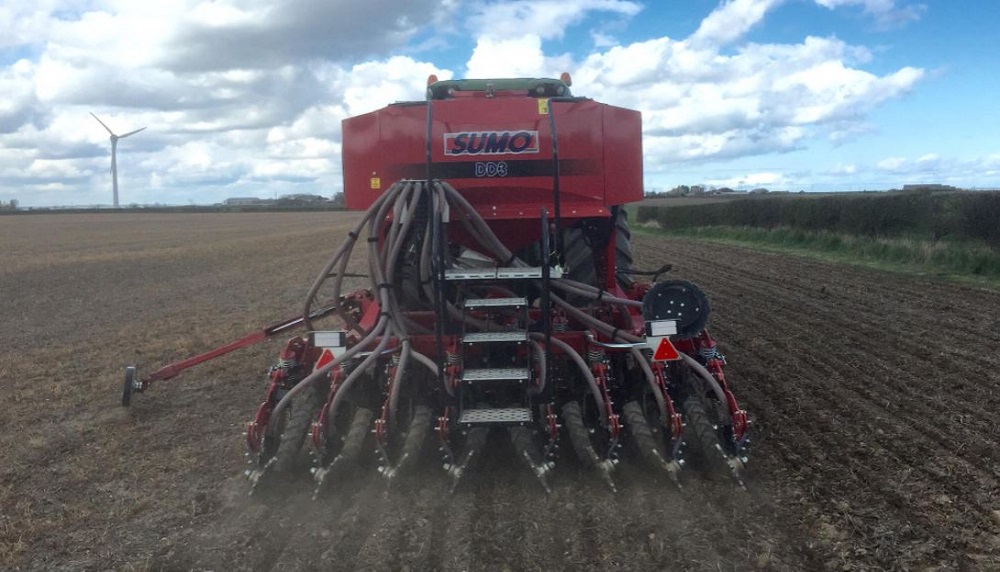- Home
- Knowledge library
- Direct drilling on arable land
Direct drilling on arable land
Direct drilling establishes a crop in one pass, without prior cultivation. Learn about the benefits and disadvantages of direct drilling and best-practice measures.
Overview
Direct drilling is when the crop is established in one pass, directly into land without prior cultivation.
Direct drilling is often seen as a natural progression after the adoption of controlled-traffic farming and/or reduced-ground-pressure-technologies, as these gradually reduce the need for remedial tillage.
Similar progressions are reported following the adoption of strip tillage.
Site considerations
Several site factors are important for effective direct drilling:
Geographical location (including rainfall and topography)
Wetter regions, especially with shorter growing seasons, limit opportunities for the natural tilth-making actions that are needed in the absence of tillage.
Soil structure
Soil in good structural condition can be farmed with less remedial tillage.
- Direct drilling is easier to adopt in naturally self-structuring soils
- Slump-prone soils rely on natural actions (for example, from plant roots, wet/dry and freeze/thaw cycles, stabilising residues and good levels of soil biological activity) to enable continuous direct drilling
 Philip Meadley
Philip Meadley
Drainage issues
- Poorly drained soils have limited windows for natural tilth-forming actions
- They compact more easily and may require tillage as a corrective action
Cropping and rotations
Cropping and rotations – especially where root or vegetable crops are included and where spring crops are regularly grown – need to be considered:
- Direct drilling in spring relies on natural structuring actions to make tilth
- Dense surface canopy cover can adversely affect such actions
- Harvest damage and bed-forming actions (for example, those associated with root crops) can need cultivations to repair
Crop residues
- Crop residues on the soil surface can affect the drilling operation and reduce evaporation of water from the surface
- Soil cover forms a barrier to seedbed-applied herbicides
- Direct drilling into standing straw stubble after a stripper header is another technique that provides flexibility for establishment with minimal cultivations and soil disturbance
Weed burden (especially grass weeds)
Tillage (especially consolidation) can help manage weeds with a non-selective herbicide.
Machinery considerations
It may be possible to use a flexible drill type or contractor services, as opposed to a specialist purchase.
If needed, many cultivator drills can be used as a direct drill (cultivation elements raised clear of work) or as a cultivator drill.
This flexibility is useful when occasional tillage is required (for example, when ploughing ahead of potatoes, sugar beet or peas).
Crop growth through surface residues
- Residue-managing units, allied to each opener, can sweep residues clear of the drilled seeds
- Other drill designs, including a combined disc with side coulters (cross slot), manage the position of surface residues and the optimal placement of the seed
- Drills should be set to ensure that crop residues and planted seeds are not in close proximity
- When seeds are planted in close proximity to residues, this can increase fungal contamination in wet conditions and delay germination as a result of poor seed-to-soil contact in dry conditions
Direct drill selection
Drill design, including opener type and ground-engaging items (discs, tines or both), needs careful consideration to permit flexibility. The drill, in all cases, needs to be suitable.
Consider:
- Crop type, seed size and placement requirements (depth and spacing)
- Residues (ability to work in residues and avoid placing seeds in contact with residues)
- Soil condition (discs cut and consolidate, tines loosen or sort aggregates)
- Nutrient requirements (for example, need to supplement N and/or P)
Types of direct drill
Most direct drills in the UK impose some form of tilth-making action in the seed zone.
This is done by the openers alone (especially tine-based or disc-based openers with undercut and a seed placement boot or coulter) or by a leading element (for example, tine or disc – the discs are likely to be fluted).
The drill must penetrate the seedbed and place seed accurately without smearing.
Two types of drill can be used:
Cultivator-type drill
- Predominantly tine based
- Used where some soil movement is desired (for example, in slump-prone soils)
No-till drill
- Predominantly disc based
- Used where little soil movement as possible is desired
Other considerations
Fertiliser placement
- Zone placement of nutrients (N and often P) may be necessary, especially in the first few years
Soil pH
- High levels of surface residue can reduce pH levels (pH needs balancing, especially in the surface zone)
Occasional tillage
- Occasional strategic tillage may be justified to maximise gross margin (for example, through management of compaction, weeds or residual herbicide effects)
Soil-to-seed contact
- If seed-to-soil contact remains unsatisfactory after drilling, consider rolling to lessen the risk of crop failure
- Aggregates and soil above the seed determine the depth of seed placement and, critically, evenness of emergence

